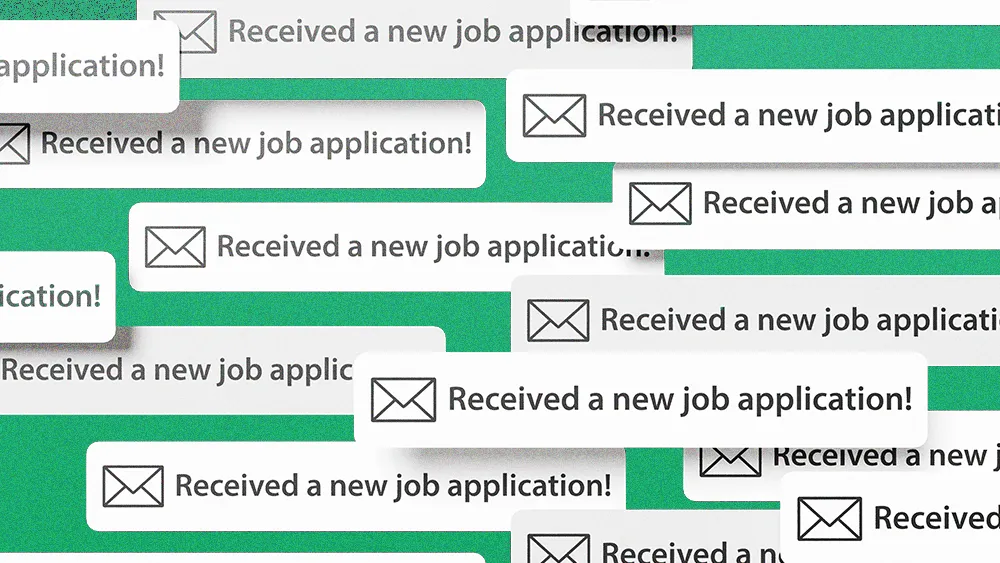ADP’s latest US jobs report reveals a split-screen economy

Key Points
The latest ADP report reveals a loss of 33,000 private sector jobs in June, contrasting with a 147,000 job gain reported by the Bureau of Labor Statistics.
Public sector hiring, particularly in education, is driving job growth, highlighting a divide between public and private sector stability.
Economic uncertainty, fueled by tariff policies, is causing private companies to hesitate in hiring, despite low layoff rates.
The latest U.S. labor report from ADP shows two diverging economies: one where government hiring is booming, and another where private companies are hitting the brakes amid economic uncertainty. The official Bureau of Labor Statistics report showed a gain of 147,000 jobs in June, while a separate ADP survey showed the private sector actually lost 33,000 jobs, its first drop in over two years.
A tale of two reports: The entire discrepancy can be chalked up to a surge in public sector hiring, which isn’t tracked by the ADP survey. Hiring in state and local government, particularly in education, drove about half the growth. This divergence paints a muddled picture, suggesting a growing schism between public and private sector stability.
The tariff effect: Uncertainty over President Donald Trump’s aggressive tariff policies is fueling the private sector’s caution. In a statement, ADP’s chief economist Nela Richardson noted that while layoffs are rare, “a hesitancy to hire and a reluctance to replace departing workers led to job losses last month.” The volatility has left businesses in a holding pattern, unwilling to commit to new payroll expenses.
Hidden strains: The economic uncertainty has prompted the Federal Reserve to hold off on interest rate cuts, a move that defies President Trump’s repeated demands for a reduction. While Fed Chair Jerome Powell described current labor conditions as “solid,” the topline numbers obscure a troubling detail: the number of long-term unemployed people jumped in June, erasing a recent decrease.
Reading the tea leaves: The dueling reports suggest that while the overall economy remains afloat thanks to government spending, the private sector is showing clear signs of strain, a dynamic that could define the economic narrative in the months ahead. The jobs report isn’t the only conflicting economic signal. While the S&P 500 has returned to all-time highs, other data reinforces hiring hesitancy, with government figures showing that job openings are rising while actual hires are falling behind.
Reading Recap:
Related articles
TL;DR
The latest ADP report reveals a loss of 33,000 private sector jobs in June, contrasting with a 147,000 job gain reported by the Bureau of Labor Statistics.
Public sector hiring, particularly in education, is driving job growth, highlighting a divide between public and private sector stability.
Economic uncertainty, fueled by tariff policies, is causing private companies to hesitate in hiring, despite low layoff rates.
The latest U.S. labor report from ADP shows two diverging economies: one where government hiring is booming, and another where private companies are hitting the brakes amid economic uncertainty. The official Bureau of Labor Statistics report showed a gain of 147,000 jobs in June, while a separate ADP survey showed the private sector actually lost 33,000 jobs, its first drop in over two years.
A tale of two reports: The entire discrepancy can be chalked up to a surge in public sector hiring, which isn’t tracked by the ADP survey. Hiring in state and local government, particularly in education, drove about half the growth. This divergence paints a muddled picture, suggesting a growing schism between public and private sector stability.
The tariff effect: Uncertainty over President Donald Trump’s aggressive tariff policies is fueling the private sector’s caution. In a statement, ADP’s chief economist Nela Richardson noted that while layoffs are rare, “a hesitancy to hire and a reluctance to replace departing workers led to job losses last month.” The volatility has left businesses in a holding pattern, unwilling to commit to new payroll expenses.
Hidden strains: The economic uncertainty has prompted the Federal Reserve to hold off on interest rate cuts, a move that defies President Trump’s repeated demands for a reduction. While Fed Chair Jerome Powell described current labor conditions as “solid,” the topline numbers obscure a troubling detail: the number of long-term unemployed people jumped in June, erasing a recent decrease.
Reading the tea leaves: The dueling reports suggest that while the overall economy remains afloat thanks to government spending, the private sector is showing clear signs of strain, a dynamic that could define the economic narrative in the months ahead. The jobs report isn’t the only conflicting economic signal. While the S&P 500 has returned to all-time highs, other data reinforces hiring hesitancy, with government figures showing that job openings are rising while actual hires are falling behind.
Reading Recap:




